Retro Replay Review
Gameplay
Junction on the Game Gear retains the core tile-shifting puzzle mechanics of its Genesis counterpart but adapts the visuals to a top-down perspective. Players control a small, rolling ball that must traverse a grid of movable tiles in order to reach the exit portal. The challenge arises from limited movement options: each tile you shift alters the layout for subsequent moves, requiring careful planning several steps in advance. This emphasis on foresight and spatial reasoning keeps each stage engaging and mentally stimulating.
(HEY YOU!! We hope you enjoy! We try not to run ads. So basically, this is a very expensive hobby running this site. Please consider joining us for updates, forums, and more. Network w/ us to make some cash or friends while retro gaming, and you can win some free retro games for posting. Okay, carry on 👍)
Controls are simple yet precise: the D-pad moves the ball in four directions, while shoulder buttons allow quick tile selection and rotation. The intuitive control scheme ensures that you remain focused on puzzle-solving rather than wrestling with input. However, the Game Gear’s more compact button layout can occasionally lead to accidental shifts if you’re not cautious, adding an extra layer of difficulty that some veteran puzzlers may appreciate.
Difficulty ramps up steadily across multiple worlds, introducing new tile types such as one-way slides, teleportation pads, and movable blocks. Early levels serve as a gentle introduction, giving you time to acclimate to the shifting mechanics. Later stages, by contrast, demand precise timing and multiple simultaneous strategies to unblock paths, making for a satisfying sense of accomplishment upon completion.
Additionally, the game features a level-remix option that allows you to replay cleared stages with modified goals, such as time limits or maximum move counts. This replayability factor extends the game’s lifespan considerably, making it appealing for completionists and puzzle enthusiasts alike.
Graphics
The shift to a top-down view on the Game Gear brings a clear and functional aesthetic, ensuring each tile and pathway is easily distinguishable. The resolution constraints of the handheld are handled adeptly: tiles are crisp, with bold outlines that prevent visual clutter. Even on the Game Gear’s smaller screen, you can quickly interpret the puzzle layout without squinting or second-guessing your moves.
Color choices lean toward bright primaries—reds, blues, and greens—offset by neutral grays for static elements. This palette not only aids in tile recognition but also gives the game a cheerful, arcade-like charm. The ball sprite, though small, is animated smoothly as it rolls or bounces across junctions, adding a touch of personality to the otherwise abstract environment.
Transitions between levels are marked by simple splash screens that display world names and tile gimmicks. While minimal, these interstitials maintain a steady pacing, letting you dive immediately into the next brain teaser. Backgrounds remain sparse, focusing attention squarely on the puzzle grid and ensuring that there are no distractions while you plot your next series of moves.
Story
At its heart, Junction is a pure puzzle experience with minimal narrative framing. The premise—a lone ball navigating a series of mechanical mazes—serves primarily as an excuse to showcase inventive level design. While fans of rich storylines may find this approach lacking, the absence of an elaborate tale keeps the spotlight on the gameplay’s cerebral challenges.
That said, a thin veneer of sci-fi setting is hinted at via brief text snippets between worlds, suggesting that the ball is an advanced robotic probe exploring an abandoned research facility. These passages, though sparse, imbue the puzzles with a mild sense of progression and mystery. You get just enough context to feel motivated to push forward and uncover what secrets lie deeper within the labyrinth.
The lack of dialogue or character interactions may feel sterile compared to narrative-driven titles, but Junction’s streamlined presentation avoids filler content. Each new world introduces mechanical variations that almost read like mini “chapters” in a broader expedition log. Puzzle fans who prefer gameplay substance over storyline flourish in this environment, relishing the uninterrupted flow of brain-bending challenges.
Overall Experience
Junction on the Game Gear is a triumph of focused puzzle design, offering tight controls, varied mechanics, and a steady difficulty curve. The top-down perspective enhances clarity and accessibility, making it easy to dive directly into intricate tile-shifting scenarios without fumbling through menus or tutorials. Whether you have five minutes or an hour, individual stages are perfectly sized for handheld play.
Replay value is high, thanks to the remix mode and optional move-count challenges that beckon you back after completing the main set of puzzles. The game’s learning curve feels fair: early levels build confidence, while later stages demand genuine strategic planning, keeping motivation levels high when you finally solve a particularly daunting layout.
Graphically, Junction maximizes the Game Gear’s capabilities, delivering a bright, well-defined display that never hampers visibility or precision. The subtle sci-fi theme provides just enough narrative intrigue to unify the level progression, albeit without the depth of a full-fledged storyline.
For puzzle aficionados and handheld veterans seeking a brain-teasing title, Junction is an easy recommendation. Its combination of accessible controls, inventive tile mechanics, and high replayability make it a standout title on the Game Gear library. If you value puzzle purity and handheld convenience, don’t miss this portable twist on the classic Genesis original.
 Retro Replay Retro Replay gaming reviews, news, emulation, geek stuff and more!
Retro Replay Retro Replay gaming reviews, news, emulation, geek stuff and more!
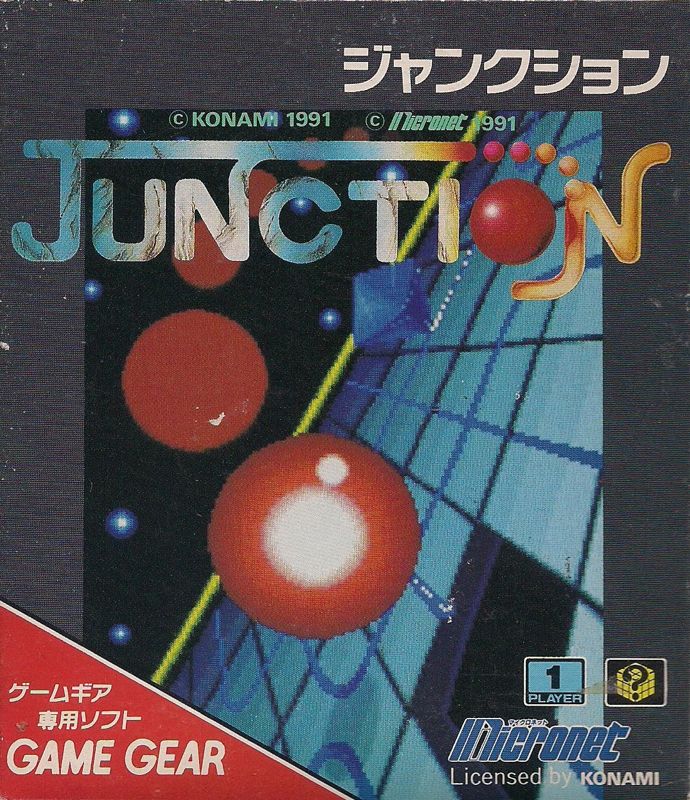
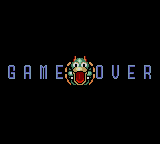
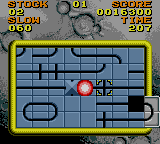
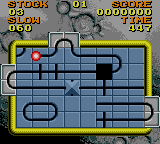
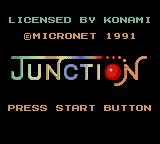




Reviews
There are no reviews yet.